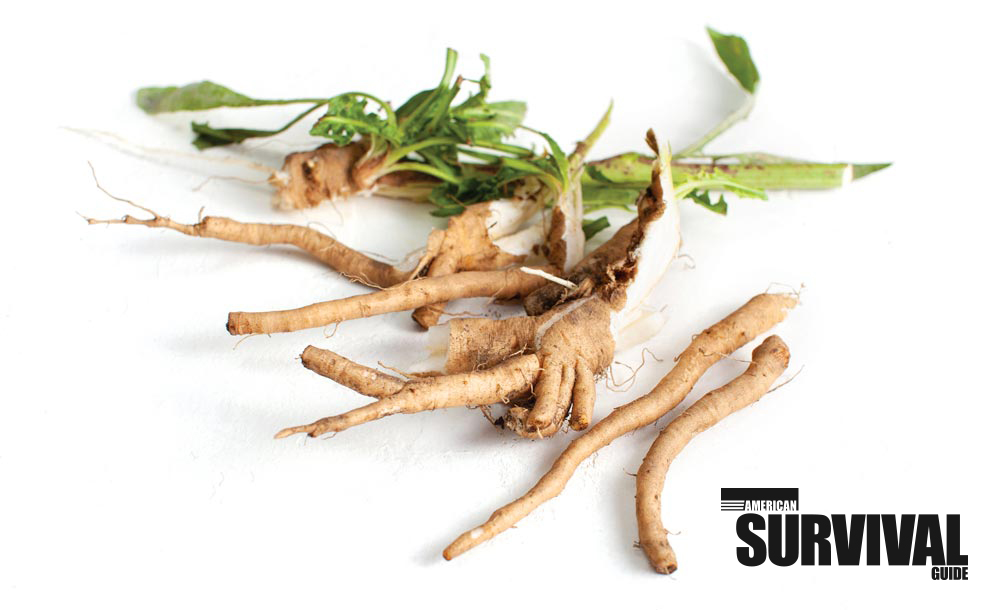Chicory: This Perennial Is Widespread, Nutritious, Easy To Identify And A Welcome Addition To Any Meal.
Name: Chicory
Description
Chicory is a member of the sunflower family (Asteraceae). Willis Linn Jepson, author of The Jepson Manual: Higher Plants of California, divides this very large family into 14 groups.
Chicory is a member of group 7 (or “chicory tribe”), described as having ligulate heads, five-lobed ligules (five teeth per petal) and generally containing milky sap when broken. There are about six species of Cichorium worldwide.
The chicory plant grows upright, typically 3 to 5 feet tall, with prominent sky-blue flowers. Look carefully at the flower: Each petal is divided into five teeth, which is typical of the sunflower family’s chicory tribe. Each leaf will produce a bit of milky sap when cut. The older, upper leaves on the stalk very characteristically clasp the stem at the base.

Where Found
Chicory is a perennial from Europe that’s now widespread and common throughout the United States—mostly in fields, gardens, disturbed soils and along roadsides.
Uses
Chicory is another of those incredibly nutritious plants with multiple uses. The leaves can be added to salads (preferably, the very young leaves). If you don’t mind a bit of bitterness, the older leaves can be added to salads too. The leaves can be cooked like spinach and added to a variety of dishes, such as soups, stews and egg dishes.
Chicory roots are also used, either boiled and buttered or sliced and added to stews and soups. Roots in rich soil tend to be less woody and fibrous.

Chicory is perhaps most widely known for its roots, which have long been used as a substitute for coffee or as a coffee extender (incidentally, you can make this same coffee substitute/extender with the roots of dandelion, sow thistle, burdock and other related plants).
Processing
For making chicory coffee, start by harvesting and washing the roots. Dry them thoroughly and then grind them and roast to taste. Percolate as you would regular coffee. Alternatively, mix the grounds with your regular coffee.
When to Harvest/Availability
Spring is the best time to harvest the leaves. The roots can be collected anytime.
Medicine/Nutrition
According to a European monograph, traditional use of chicory roots includes the relief of symptoms related to mild digestive disorders (such as a feeling of abdominal fullness, flatulence and slow digestion) and temporary loss of appetite.

Chicory Root
The USDA analysis of the root is based on an “average” root (60-gram weight). It contains nearly 44 calories, 24.6 mg of calcium, 36.6 mg of phosphorus, 30 mg of sodium, 174 mg of potassium, 3.6 mg of vitamin A, 0.2 mg of niacin and 3 mg of vitamin C.
If you’re making chicory coffee, you’re only consuming a little of the root. However, if you’re eating the roots as you might parsnips, you’ll be getting all these benefits.
Chicory Leaf
According to the latest USDA data, 100 grams of raw chicory greens contain 23 calories, 5,717 IU of vitamin A, 24 mg of vitamin C, 2.26 mg of vitamin E (alpha), 297 micrograms of vitamin K, 0.5 mg of niacin and lesser amounts of other vitamins. The USDA measures 45 mg of sodium and 420 mg of potassium.
Minerals include 100 mg of calcium, 0.9 mg of iron, 30 mg of magnesium and 45 mg of phosphorus, as well as lesser amounts of phytonutrients, such as carotene.

Advice for Growing
The chicory root is easily cultivated in pots or backyard gardens. Simply dig up a root and transplant it. It should have some sun; and, although it can grow in poor soil, it will thrive in quality soil.
Cautions
None
Recipes
Chicory Hickory Dock
- 2 cups young chicory leaves
- 2 cups dock greens
- 1 cup hickory nut meats, minced
- 2 tablespoons butter
Taste the chicory leaves to be certain they’re not too old and bitter. If they’re exceedingly bitter, first drop them into boiling water and then drain the water after about five minutes. Then, you can use them in the following recipe.
Steam or gently cook in a small amount of water 2 cups each of chicory and dock leaves that have been torn into bite-sized pieces.
Before serving, sprinkle minced hickory nuts over the cooked greens and add the butter. Add a dash of salt if desired. (Minced walnuts, almonds or peanuts can be used if hickory nuts are unavailable.) Serves three.

Country Chicory Fry
- Bacon fat
- 2 cups young chicory leaves
- ½ onion, diced
Using the grease from fried bacon, oil a skillet and warm it. Rinse the chicory and tear it into bite-sized pieces. (Older chicory could be extremely bitter, so first drop the leaves into boiling water.
Let them cook for no more than five minutes. Drain and remove the leaves and then use in this recipe.) Put the onion into the skillet and lightly sauté. Stir in the chicory and cook until wilted. Serve warm. Serves two.
About ASG’s Plant Advisor
Christopher Nyerges has been teaching ethnobotany since 1974. He is the author of Guide to Wild Foods and Useful Plants, Foraging Wild Edible Plants of North America and other books on the uses of wild plants. He can be reached at SchoolofSelf-Reliance.com.
Editor’s note: A version of this article first appeared in the December, 2020 print issue of American Survival Guide.


